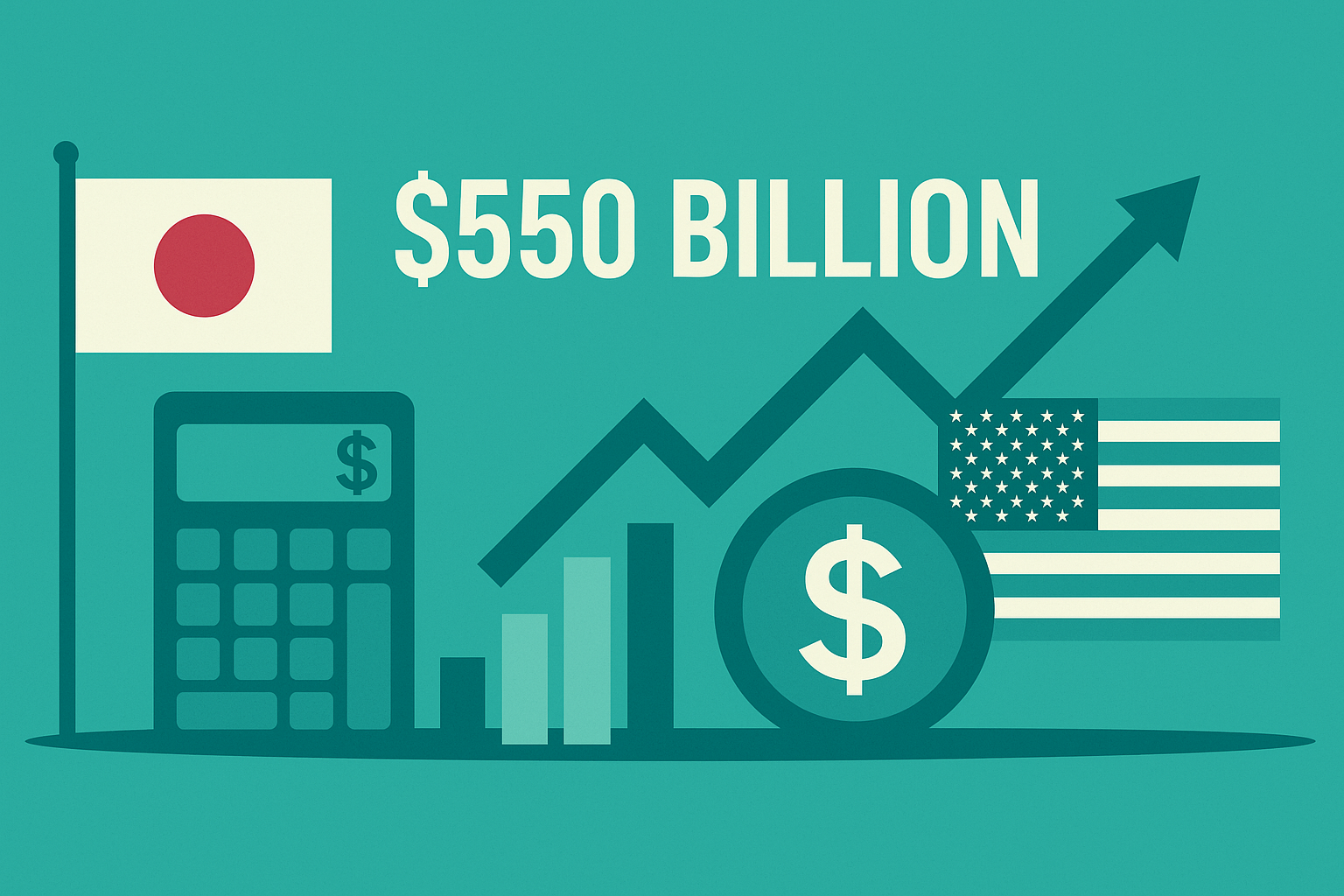— An Analysis Through the Lens of Krugman and Macroeconomic Fundamentals —
1. Introduction: The Core Structure of the Agreement
In July 2025, Japan and the United States reached a compromise under the Trump administration whereby mutual tariffs would be set at 15%, down from the potential 25% unilateral hike by the U.S. As part of this deal, Japan agreed to a massive $550 billion investment package directed toward U.S. industries and infrastructure, aiming to secure continued market access and economic stability.
While this appears to be a balanced trade-off between tariff reduction and investment expansion, Nobel laureate economist Paul Krugman argues that the underlying structure of this deal introduces systemic risks to Japan’s economic stability.
2. Krugman’s Critique: A Structural Imbalance
Krugman highlights two key concerns in his recent commentary:
(1) Capital Account Surplus = Current Account Deficit
Krugman points out that Japan’s $550 billion capital outflow into the U.S. will be reflected as a capital account surplus, which inherently requires a current account (trade) deficit under the balance of payments identity.
“If Japan finances large-scale investments abroad, it must run a trade deficit to match. This undermines its export-based growth model.”
He suggests that injecting such enormous capital into a foreign economy — under the guise of reducing trade imbalances — is economically incoherent and counterproductive.
(2) The Risk of Endless Concessions
Krugman further warns that:
“Trump is not likely to be satisfied with one deal. He will escalate demands again, and Japan may find itself on a slippery slope of recurring concessions.”
This implies that today’s ‘one-time compromise’ could evolve into a recurring pattern of strategic dependency.
3. Medium-to-Long-Term Impacts on Japan’s Economy
(1) Declining Competitiveness in Export Sectors
Japan’s key strength — high-value manufacturing and exports — may weaken as its products face price pressure in a tariff-laden environment. SMEs and component suppliers could be disproportionately impacted.
(2) Currency Pressure and Import-Driven Inflation
Capital outflows will exert downward pressure on the yen, exacerbating import inflation in energy, food, and raw materials. This could lead to a stagflationary dynamic if not properly managed.
(3) Fiscal Risk and Financial Fragility
If public institutions like JBIC finance these U.S.-bound investments with low-interest loans, default risks may arise, especially in low-ROI projects. These could ultimately burden taxpayers.
4. Strategic Recommendations
A. Strict ROI Screening for Overseas Investments
Japan must apply rigorous economic screening for each investment in the U.S., avoiding political appeasement-driven projects that lack profitability.
B. Strengthening Domestic Supply Chains & FX Risk Hedging
To hedge against yen depreciation and rising import costs, Japanese firms should reshore critical supply chains and adopt active currency hedging strategies.
C. Ensuring BOJ Independence & Monetary Flexibility
Increased inflation pressure will require the Bank of Japan to maintain its independence and potentially adjust or unwind policies like YCC (Yield Curve Control) based on market conditions.
5. Conclusion: Deepened Partnership or Economic Subordination?
This agreement, though hailed as a diplomatic achievement, may represent a long-term shift in Japan’s economic posture — from independent policymaker to strategic investor at the mercy of U.S. politics.
As Krugman correctly notes, a capital account surplus always implies a trade deficit, weakening Japan’s ability to sustain external demand-driven growth. The long-term policy focus must therefore shift to rebuilding domestic economic resilience and strengthening Japan’s position in global value chains.


